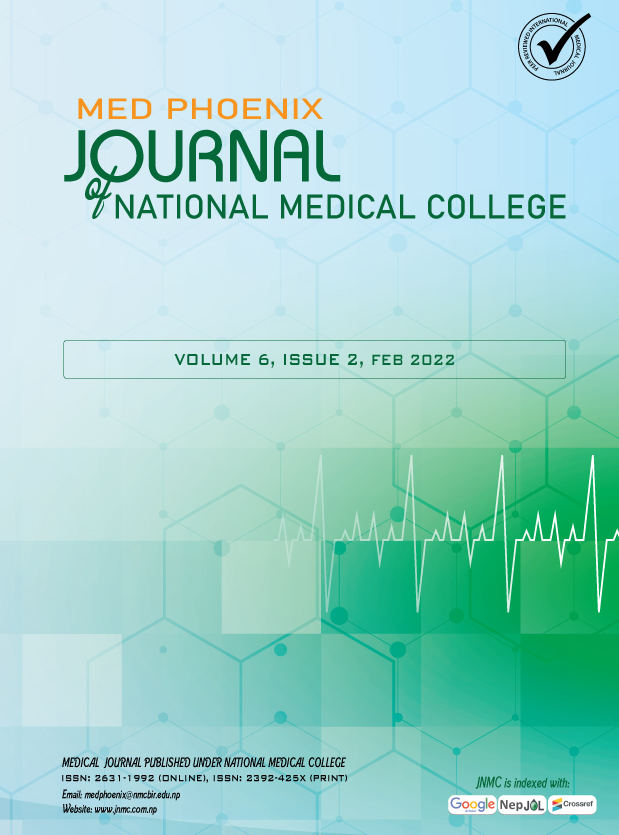Malignant Cervical Lymphadenopathy among Fine Needle Aspiration Cytology in a Tertiary Care Center in Far Western Nepal: A Descriptive Cross-sectional Study
DOI:
https://doi.org/10.3126/medphoenix.v6i2.42692Keywords:
fine needle aspiration, lymphadenopathy, metastatic, NepalAbstract
Introduction
Metastatic cervical lymphadenopathy is a diagnostic and therapeutic challenge. The utility of Fine Needle Aspiration Cytology is well established in the diagnosis of metastatic lymph nodes, new-onset, or recurrence. This study aims to find the prevalence of metastatic cervical lymphadenopathy among fine needle aspiration cytology in a tertiary care center in far western Nepal.
Materials and Methods
This is a descriptive cross-sectional study carried out in Seti Provincial Hospital and Maya Metro Hospital, Dhangadhi, Kailali, Nepal between July 2018 to December 2019. Total 534 cervical lymph node aspirations were performed during this period out of which 48 cases were cytologically proven as malignant lymph nodes. Clinical charts and cytology reports of patients with malignant lymph nodes were reviewed.
Results
Out of 534 cervical lymph node aspirations performed during the study period, the number of malignant lymph nodes was 48 (8.99%). Among malignant lymph nodes (n=48), primary hematolymphoid malignancy was 14 (29.17%) and metastatic cervical lymphadenopathy was 34 (70.83%). Metastatic squamous cell carcinoma was the most common etiology of metastatic cervical lymphadenopathy followed by nasopharyngeal carcinoma and papillary carcinoma of the thyroid.
Conclusion
Fine needle aspiration cytology has been proved to be a valuable tool in the initial evaluation of metastatic cervical lymphadenopathy in resource-limited settings. Metastatic squamous cell carcinoma is the most common diagnosis in metastatic cervical lymphadenopathy.
Downloads
Downloads
Published
How to Cite
Issue
Section
License
Copyright (c) 2022 Med Phoenix

This work is licensed under a Creative Commons Attribution 4.0 International License.
Copyright on any research article is transferred in full to MED PHOENIX upon publication. The copyright transfer includes the right to reproduce and distribute the article in any form of reproduction (printing, electronic media or any other form).
© MEDPHOENIX
![]()
Articles in the MED PHOENIX are Open Access articles published under the Creative Commons CC BY License (https://creativecommons.org/licenses/by/4.0/). This license permits use, distribution and reproduction in any medium, provided the original work is properly cited.




